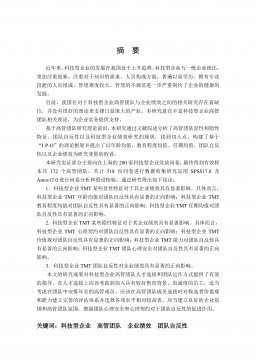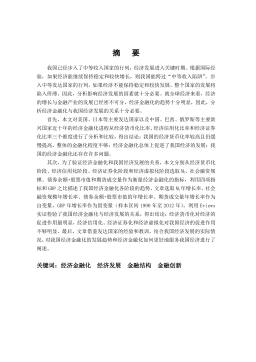圆形静压空气止推轴承静特性研究
VIP免费
摘要
气体静压轴承由于具有超高速、高精度、低摩擦和无污染等的优点而广泛运
用在航天航空、高精度加工平台和高精密测量仪器等领域中。其中气体静压止推
轴承更是因为其结构简单,特点突出而应用广泛。气体从外部压力源经供气孔流
入气腔,之后经过轴承气膜间隙流出轴承到达外部环境。因此,气腔中的气体压
力取决于节流器的流体阻抗和气膜间隙的流体阻抗,进而影响着轴承的静特性。
因此要提高气体轴承的静、动特性,必须从节流器的节流原理和作用效果出发,
因此这也成为了流体润滑理论和气体轴承开发设计研究的重点内容之一。
本文首先从两种不同类型节流器——环面节流和小孔节流出发,采用 CFD 流
体软件对这两种不同节流器类型的单供气孔气体静压止推轴承进行数值仿真,得
到流场特性、压力分布和轴承静特性。进一步总结得到两种节流器类型轴承的结
构参数和供气参数对静特性的影响。
然后针对多供气孔小孔节流器,从流体润滑理论中的节流原理出发,将其分
为四种不同的节流类型,同时提出了分别满足这四种类型的结构参数要求。从气
腔的结构入手,分析了气腔深度和直径对轴承气膜内流场、压力分布和静特性的
影响规律。并针对供气孔的位置即其分布圆直径对轴承特性的影响进行了分析。
研究结果可以为不同的使用场合和需求,选择合理的节流类型及其结构参数和供
气参数提供参考。
综合本文的内容和结果表明,采用 CFD 数值模拟对于气体静压止推轴承的研
究具有一定的参考意义。在结构上从节流器入手,在流动上从压力分布和流场特
性入手,可以为特定场合和特定要求的气体静压止推轴承的选用从结构参数和供
气参数上提供一定的参考。
关键词:气体轴承 节流类型 环面节流 小孔节流 压力分布 轴承静特性
ABSTRACT
Since it has many advantages of ultra high-speed, high precision, low friction and
non-polluting, the aerostatic bearing has widely used in aerospace industry, high
precision processing platform and high precision measuring instruments and other fields
like this. So the aerostatic thrust bearing has a wide range of applications because of its
simple structure and prominent features. Gas through a supply hole which is supplied by
an external pressure source into the gas chamber, then flow into the bearing gas gap,
finally outflow the bearing to the ambient atmosphere. Therefore, gas pressure in the
chamber and gas gap depends on the fluid impedance of restrictor and bearing clearance.
Accordingly, affects its static characteristics. In order to improve the static and dynamic
characteristics of gas bearing should set off from the throttling principle and effect. This
is also the main important content of fluid lubrication theory and research and
development of gas bearing.
This paper presents two types of orifice——inherent-compensated and
orifice-compensated. Commercial computational fluid dynamics software Fluent is used
to simulate this two types aerostatic thrust bearings, then their respective flow field,
pressure distribution and the static performances can be obtained. The influence of main
structure parameters and gas supply parameters on static characteristics is investigated
and summarized.
Next, classified the multi-orifice-compensated aerostatic thrust bearing into four
types based on the theory of fluid lubrication. the structure parameters were put forward
to meet certain requirements. Start with the gas chamber structure, analyzed the
influences of depth of chamber and diameter of chamber on the flow field, pressure
distribution and the static performances. Finally, the influences of location of supply
hole on the static performance have been discussed too. In this way, there are many
optional and proper parameters can be selected to optimize the characteristics on
different occasions and needs.
According to the above contents, the results have some reference significance to
engineering research and design on aerostatic bearing based on CFD numerical
simulation. In the structure, begin with restrictor. In the flow, begin with pressure
distribution and flow field characteristics. But above all, from this paper can be
summarized a method for selection of structure parameters and air supply parameters
about aerostatic thrust bearing in specific situations and applications.
Keyword: aerostatic thrust bearing, throttling type, inherent-compensated,
orifice-compensated, pressure distribution, static characteristic
目录
摘要
ABSTRACT
目录
第一章绪论 ...................................................................................................................... 1
1.1 研究背景与意义 .................................................................................................. 1
1.2 气体轴承的介绍 .................................................................................................. 3
1.2.1 气体轴承分类 .............................................................................................. 3
1.2.2 气体静压支承组成 ...................................................................................... 5
1.2.3 气体静压轴承气源 ...................................................................................... 5
1.3 气体轴承的研究现状 .......................................................................................... 5
1.3.1 气体静压止推轴承国内外研究现状 .......................................................... 6
1.3.2 气体静压止推轴承的发展趋势 .................................................................. 8
1.4 本文主要研究内容 .............................................................................................. 9
第二章气体静压止推轴承基本概念与理论 ................................................................ 10
2.1 气体轴承基本方程式—Reynolds 润滑方程 .................................................... 10
2.2 惯性力的影响 .................................................................................................... 12
2.3 边界条件 ............................................................................................................ 12
2.3.1 速度边界条件 ............................................................................................ 12
2.3.2 压力边界条件 ............................................................................................ 13
2.3.3 流量边界条件 ............................................................................................ 13
2.3.4 对称边界条件 ............................................................................................ 14
2.4 正方形气体静压止推轴承的性能计算 ............................................................ 15
2.4.1 雷诺方程的差分离散 ................................................................................ 15
2.4.2 轴承静特性参数求解 ................................................................................ 17
2.4.3 正方形气体静压止推轴承实例分析与计算结果 .................................... 18
2.5 本章小结 ............................................................................................................ 20
第三章两种节流类型气体静压止推轴承性能研究 .................................................... 21
3.1 节流器介绍 ........................................................................................................ 21
3.1.1 节流器原理 ................................................................................................ 21
3.1.2 节流器类型 ................................................................................................ 22
3.2 两种节流类型轴承数值模拟 ............................................................................ 24
3.2.1 轴承的计算模型与边界条件 .................................................................... 24
3.3 两种节流类型轴承数值模拟结果 .................................................................... 26
3.3.1 两种节流类型压力场 ................................................................................ 26
3.3.2 环面节流结果分析 .................................................................................... 27
3.3.3 小孔节流结果分析 .................................................................................... 30
3.4 两种节流类型轴承静特性结果 ........................................................................ 33
3.4.1 供气孔直径对轴承静特性影响 ............................................................... 33
3.4.2 供气压力对轴承静特性影响 .................................................................... 35
3.4.3 轴承直径对轴承静特性影响 .................................................................... 36
3.4.4 气腔直径和气腔深度对小孔节流轴承静特性影响 ................................ 38
3.5 考虑可压缩性对轴承静特性的影响分析 ........................................................ 39
3.5.1 两种节流类型压力场 ................................................................................ 40
3.5.2 考虑可压缩性环面节流结果分析 ............................................................ 40
3.5.3 考虑可压缩性小孔节流结果分析 ............................................................ 45
3.5.4 考虑可压缩性与不可压轴承静特性比较 ................................................ 48
3.6 本章小结 ............................................................................................................ 49
第四章多供气孔小孔节流止推轴承静特性分析 ........................................................ 51
4.1 小孔节流类型的节流划分 ................................................................................ 51
4.2 多供气孔小孔节流止推轴承模型及网格划分 ................................................ 55
4.2.1 多供气孔轴承计算模型 ............................................................................ 55
4.2.2 网格划分 .................................................................................................... 56
4.2.3 边界条件设置及数值计算方法 ................................................................ 57
4.3 第一种小孔节流类型静特性分析 .................................................................... 57
4.3.1 气腔深度对静特性影响分析 .................................................................... 57
4.3.2 气腔直径对静特性影响分析 ................................................................... 57
4.4 第二种小孔节流类型静特性分析 .................................................................... 61
4.4.1 气腔深度对静特性影响分析 .................................................................... 61
4.4.2 气腔直径对静特性影响分析 ................................................................... 63
4.5 第三种小孔节流类型静特性分析 .................................................................... 65
4.5.1 气腔深度对静特性影响分析 .................................................................... 65
4.5.2 气腔直径对静特性影响分析 ................................................................... 67
4.6 第四种小孔节流类型静特性分析 .................................................................... 69
4.6.1 气腔深度对静特性影响分析 .................................................................... 69
4.6.2 气腔直径对静特性影响分析 .................................................................... 71
4.7 小孔节流位置对静特性影响分析 .................................................................... 73
4.8 本章小结 ............................................................................................................ 75
第五章结论与展望 ........................................................................................................ 76
5.1 结论 .................................................................................................................... 76
5.2 展望 .................................................................................................................... 76
参考文献 ........................................................................................................................ 78
在读期间公开发表的论文和承担科研项目 ................................................................ 84
一.发表论文 ............................................................................................................. 84
二.参加科研项目 ..................................................................................................... 84
致谢 ................................................................................................................................ 85
第一章 绪论
1
第一章 绪论
1.1 研究背景及意义
流体静压支承是借助于输入支承工作面之间的流体润滑介质的静压力来支承
载荷的滑动支承,它处于纯流体润滑条件下工作[1]。润滑介质可以是传统的液体,
也可以是气体。静压支承的优点是流体润滑状态的建立与其相对速度无关,所以
静压支承可在很宽的速度范围和载荷范围内低磨损地工作。
气体静压支承是以气体作为润滑剂的一种静压支承,它的工作原理与液体静
压支承相似,即外载荷由流体膜内的压力所承受,而流体膜内的压力则是由外界
压力源通过补偿元件供给的[1]。
气体静压支承具有以下优点:首先,气体静压支承是一种高精密机械动力部
件,用来支承超精密运动平台。气体静压支承具有较高的刚度,并能在速度和载
荷变化较大的范围内保持这种高刚度,因此特别适用于机床。其次,静压支承几
乎能够在所有的滑动速度(包括速度为零)时,气体膜将支承件与被支承件完全
分开。在很多高精密运动机构中,一些部件需要在极低和极为准确的控制速度下
运动,此时可以采用气体静压支承,如三坐标测量机。另外,在一些机床中,为
了保证加工的精度和光洁度,机床中有很多部件常常需要以极低的速度在很小的
作用力下非常平稳地运动。而气体润滑不易发生爬行现象,所谓爬行现象是指在
低速时滑动摩擦副中从动件在匀速驱动和一定摩擦条件下产生的周期性时停时走
或时慢时快的运动现象。因此,有些仪器就采用气体静压支承,如自由陀螺仪[2]。
总之,随着机械装备制造、医学工程、航空航天技术等的快速发展,对于加工机
床、测量仪器等有了更高精密、高精准和高稳定的要求。同时,由于气体的物理
特性,振动小、黏度低、不易发生爬行等现象、热稳定性好而且无污染环境等优
点,使气体静压支承技术更好地应用于精密加工机床和精密测量仪器等[3]。
在19 世纪中期,便有人提出用气体作为润滑介质的可能性。即在轴与轴承之
间构成气膜,使运动面与静止面避免直接地接触。随着理论分析研究工作多方面
的开展,气体轴承在许多领域得到了广泛的应用。气体轴承与液体轴承相比,各
自有很多优缺点。液体轴承的局限性主要在于[4]:
1.液体润滑膜不能适用于高速及超高速轴承,液体润滑剂的黏度大,因此液体
轴承有较高的承载力和刚度,但是在高速下所消耗的摩擦功率和摩擦热量会给液
体轴承带来致命的磨损和破坏。
圆形静压空气止推轴承静特性研究
2
2.液体润滑膜不能适用于超高精密度要求的加工环境。例如,精密的试验平台、
高精度的测量装置、高精度高速度的陀螺仪等。
3.液体润滑膜在轴承运转的过程中不可避免地发生蒸发和污染。而且不断地循
环受到压缩和膨胀与受热,润滑剂很容易老化而失去润滑性能,所以需要定期更
换。而更换下来的废油应当及时处理以免污染环境,这样带来了液体轴承的使用
和维护成本。
4.液体润滑剂只能在一定的温度范围内工作。温度过高,黏度降低,蒸发过快、
劣化加快;温度过低,黏度太大,不仅消耗功率过多,而且给机器的启动和运转
造成困难。所以温度通常限定在润滑剂的凝点以上,约为 0~90℃。
由于液体润滑存在以上的局限性,气体润滑便应运而生。它有一些非常特有
的性质:
1.转速高、磨损低 气体润滑膜的黏度只有液体膜的 1%~0.01%。所以气膜润
滑的摩擦热量远远低于液膜润滑。因此气体轴承的温升较低,由于外部气体的供
应,轴承气膜内的气体是不断更新的,相当于一种内部冷却。因此它可以在较大
的温度范围内工作。在低温领域可用于膨胀透平及深冷回转机械中;而在高温领
域,可用于高温气体循环以及燃气透平机械中。同时,气体轴承的转速能达到 3
×104~5×105r/min。
2.回转精度高 气体润滑膜是可压缩的气体,与润滑油相比比较有柔性,气膜
恰好可以平滑轴承内的凹凸不平的地方,这种作用通常被称为均化效应。因此,
可以提高轴承面的直线性和垂直度,进而运转平稳、回转精度高。特别适用于超
高速和超精密的加工装置中。
3.安全无污染 气体润滑具有很高的安全性。采用惰性气体作为润滑可以应用
于易燃易爆的一些特殊危险环境中。而且它是一种清洁的资源,对环境没有污染,
因此气体轴承适用于食品药品加工、医疗器械等特殊环境中。
然而,气体轴承也存在一些缺点和不足:
1.气体轴承承载能力低 轴承的承载能力主要取决于润滑剂的粘性。因此,气
体轴承的承载力比液体轴承小很多。
2.气体轴承刚度低 因为轴与轴承间隙内充满着可压缩的气体,与不可压缩的
液体轴承相比,刚度自然低了很多。同时,在高负载作用下,对于液体轴承间隙
即使达到几乎不存在的时候,油膜也可以变成单分子层,轴承也能够很好的运行,
不会造成重大损伤,这就是液体的边界润滑能力。而气体就完全不同,负载一旦
超过了额定限度,立刻会发生固体的直接接触而抱轴,从而发生停止工作甚至是
损坏的现象。
第一章 绪论
3
3.气体轴承的稳定性差 在静压型轴承中,由于存在外部气源,容易发生引起
振动的气锤现象。气锤现象是指由于气体的压缩性在带有气腔的静压气体轴承中,
一旦向轴承供气,就会伴随着尖叫声,轴开始激烈振动。而在高速运转时,无论
是静压型还是动压型轴承,都有可能发生振摆回转不稳定现象,即“涡动”现象[5]。
4.气体轴承的制造工艺复杂,成本较高 因为对于气体轴承的尺寸、位置精度
要求都极高,因此加工工艺很复杂,要求也很高。同时要求有净化的供气系统,
对轴承工作环境也要求净化和干燥。
1.2 气体轴承的介绍
1.2.1 气体轴承分类
气体轴承是利用气体的黏性剪切机理,在轴承间隙内会产生气膜压力,从而
起到支承的作用使物体悬浮起来。根据轴承的工作原理,气体轴承可分为气体动
压轴承、气体静压轴承和气体压膜轴承,其中以动压气体轴承和静压气体轴承的
应用最广。按承受载荷的方向不同,又可分为气体径向轴承、气体止推轴承、气
体球面轴承和气体锥面轴承。
(a) (b) (c)
移动
楔状间隙 节流器 加压气体 上下振动
动压型 静压型 压膜型
图1–1 气体轴承种类示意图
如图1–1(a)所示是动压型轴承的结构原理图。两个面之间相对移动,形成楔
形间隙,沿着移动方向间隙逐渐减小。由于存在相对运动,气体因其粘性作用被
拖带压入楔形气膜间隙中,从而产生压力,形成动压悬浮状态。
如图1–1(b)所示是静压型轴承的结构原理图。它是由一套供气系统将一定压
力的压缩气体,通过节流孔导入气膜间隙中,利用其静压使之悬浮起来。节流孔
的作用是当气膜间隙发生变化时,它可以调节气膜间隙内的压力,从而使轴承具
有一定的刚度。
如图1–1(c)所示是压膜型轴承的结构原理图。它是利用了相互接触的面沿垂
摘要:
展开>>
收起<<
摘要气体静压轴承由于具有超高速、高精度、低摩擦和无污染等的优点而广泛运用在航天航空、高精度加工平台和高精密测量仪器等领域中。其中气体静压止推轴承更是因为其结构简单,特点突出而应用广泛。气体从外部压力源经供气孔流入气腔,之后经过轴承气膜间隙流出轴承到达外部环境。因此,气腔中的气体压力取决于节流器的流体阻抗和气膜间隙的流体阻抗,进而影响着轴承的静特性。因此要提高气体轴承的静、动特性,必须从节流器的节流原理和作用效果出发,因此这也成为了流体润滑理论和气体轴承开发设计研究的重点内容之一。本文首先从两种不同类型节流器——环面节流和小孔节流出发,采用CFD流体软件对这两种不同节流器类型的单供气孔气体静压止...
相关推荐
-
跨境电商商业计划书模版VIP免费
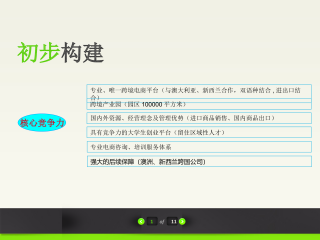
 2025-01-09 27
2025-01-09 27 -
跨境电商方案范文VIP免费
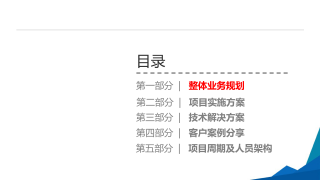
 2025-01-09 14
2025-01-09 14 -
创业计划书VIP免费
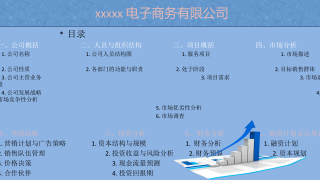
 2025-01-09 18
2025-01-09 18 -
xx生鲜APP计划书VIP免费

 2025-01-09 12
2025-01-09 12 -
跨境电商创业园商业计划书(盈利模式)VIP免费
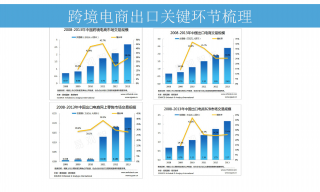
 2025-01-09 8
2025-01-09 8 -
跨境电商计划书VIP免费
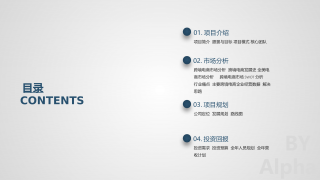
 2025-01-09 13
2025-01-09 13 -
绿色食品电商平台项目计划书VIP免费

 2025-01-09 22
2025-01-09 22 -
农产品电子商务商业计划书VIP免费

 2025-01-09 9
2025-01-09 9 -
农村电商平台商业计划书VIP免费
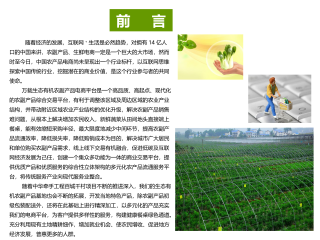
 2025-01-09 13
2025-01-09 13 -
生鲜商城平台商业计划书VIP免费
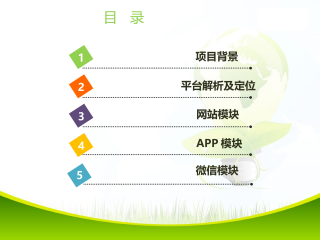
 2025-01-09 21
2025-01-09 21
作者:赵德峰
分类:高等教育资料
价格:15积分
属性:89 页
大小:3.26MB
格式:PDF
时间:2024-11-11


